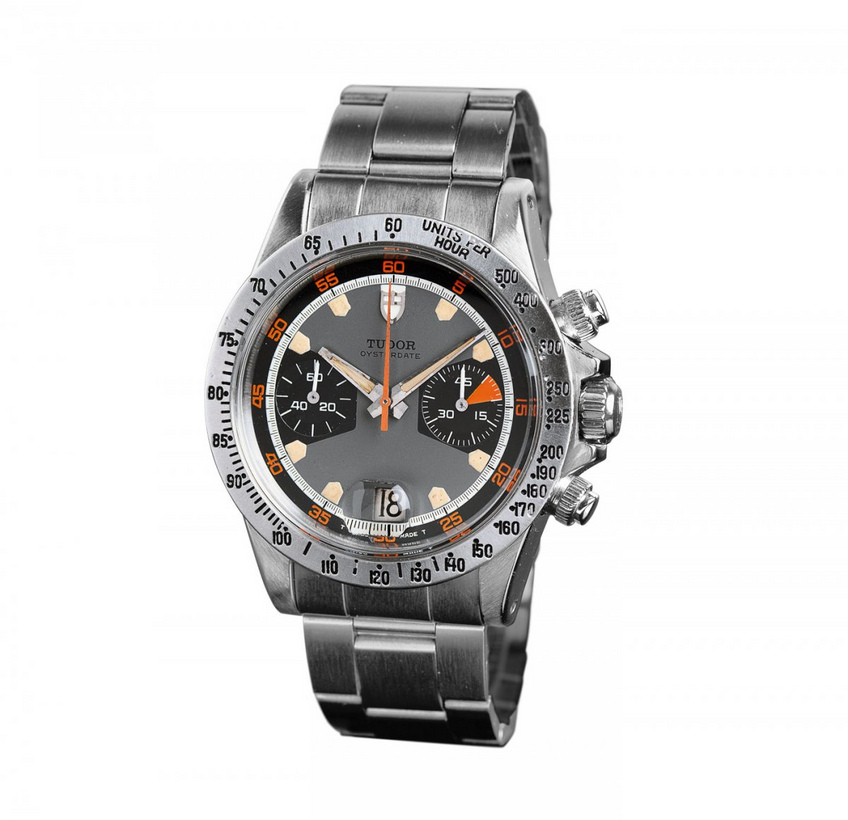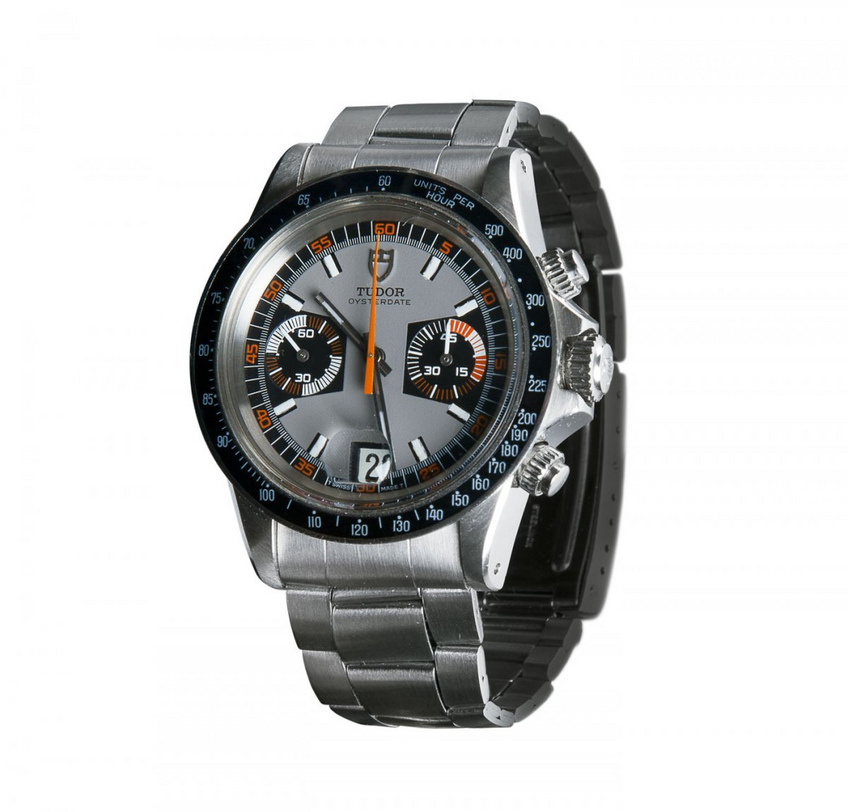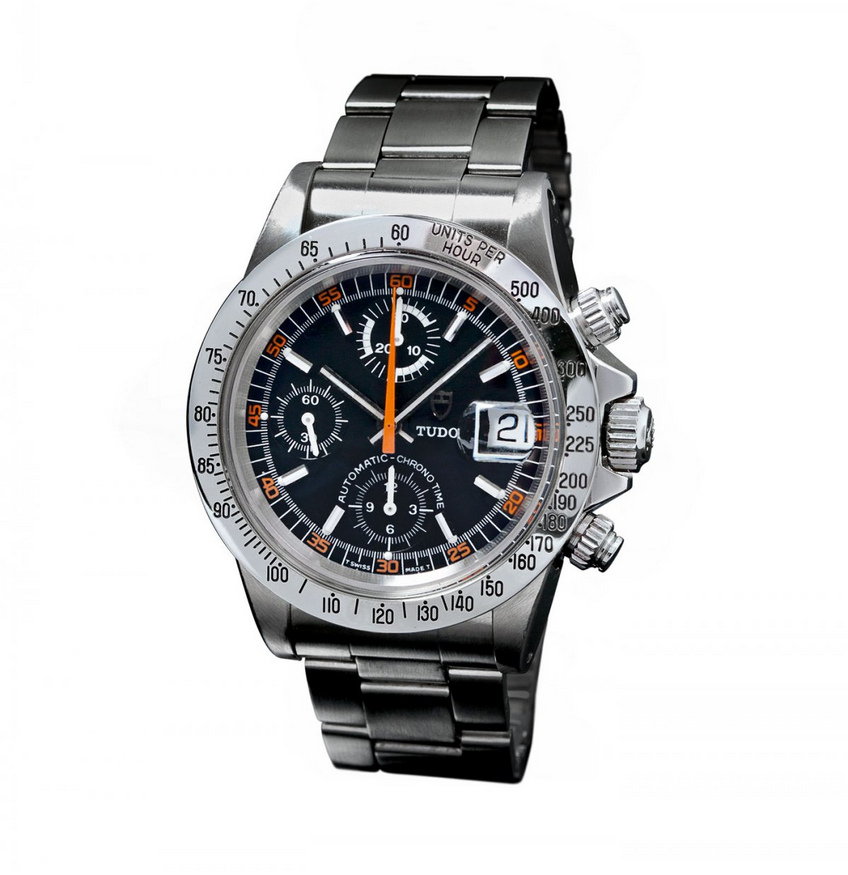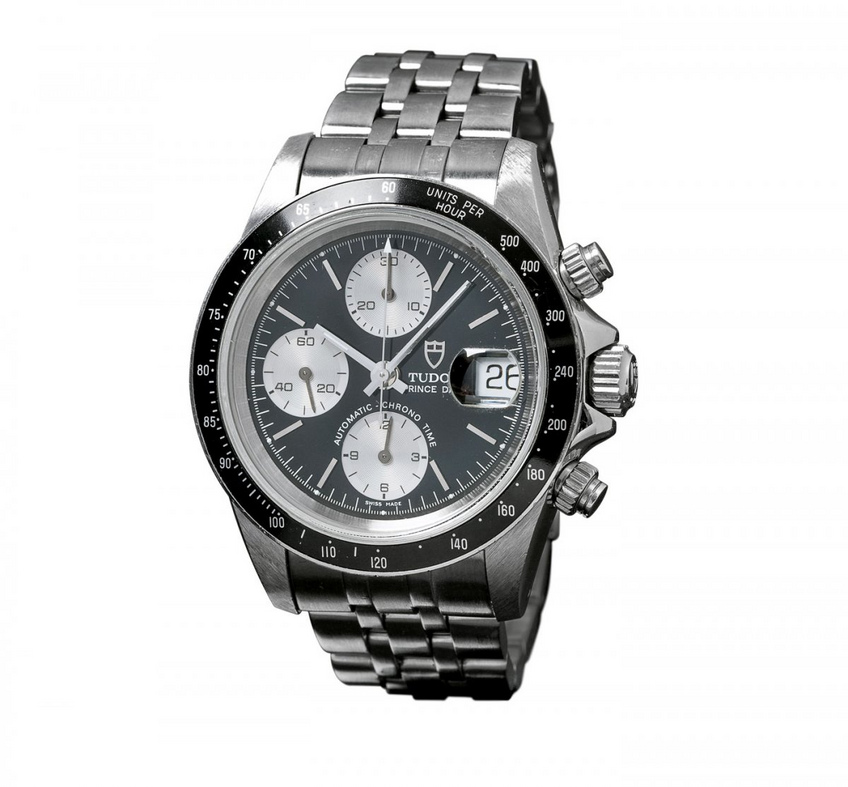

Tudor History – The Chronographs
The Tudor chronographs have always been of great interest to collectors, due to the wide range and variations available.
The Tudor chronographs were very fortunate to have been gifted, by Hans Wildorf, the Oyster case and with it they produced some of the most memorable and innovative sports chronographs of the 1970s and 80s. In a world dominated by monochrome sports watches, Tudor’s designs stood out as eye catching through innovative use of colour, especially on the chronographs and diving watches. This use of vibrant colour has been a notable feature right through to watches in the current collections.
Tudor’s chronograph story
This story begins in 1970 when Montres Tudor SA launched the Oysterdate chrono, references 7031 and 7032. The watches were reasonably big for the time, measuring at approximately 40mm across and made excellent use of the Oyster case (the screw down case back and winding crown) and additional waterproof screw down pushers. The 7031 and 7032 were essentially the same watch, the only difference being the bezel - the 7031 featured a black plastic ‘bakelite’ tachymeter bezel and the 7032 featured an all stainless steel tachymeter. In recent years we have learnt that Tudor also made a prototype 7033 chronograph, again aesthetically identical to the 7031/2 but featuring a rotating graduated 12-hour bezel made from black aluminium. This watch never made it to production (although I have handled the prototype on a couple of occasions) but it was the basis of the Heritage Chronograph with which Tudor launched its Heritage line of watches in 2010.

The dials had a very interesting design, that has become instantly recognisable as an iconic collectors’ piece and not just Tudor collectors, but collectors of all important sports watches. A key feature of the dial is the shape of the hour markers, which are shaped like the home plate on a baseball field. This led to collectors giving the watch its well know moniker the Homeplate. Over the years, however, another name has periodically used for the watch - the ‘Porsche Chrono’. This name exists due to an advertisement for the Japanese market, where a 7032 advert featured a Porsche 911 – two icons side by side!
The 703X watches had a calibre 7734 manual-wind movement with a 45 minute stopwatch. The case featured crown guards that were very similar to the very early ‘square’ guards on the first series 7928 Submariners. Screw down pushers, whilst also making the case waterproof, also prevented accidental pushing during timing exercises. The watch also featured a date, which was a useful feature and a first for a sports chrono from the Wilsdorf stable! The watches were delivered on Rolex 7836 Oyster bracelets and utilised the Rolex twin lock 700 (7mm) winding crown.
Tudor’s Heritage range of watches
In 2010 Tudor launched, to critical acclaim, their Heritage range of watches - modern watches based heavily on key pieces from their archive. They chose the 703X chronograph for their first release and launched the watch with two dial styles, both grey and black. This was an interesting development for collectors, as the black dialled version of the dial in the vintage watches was extremely rare - almost mythical. Less than a dozen examples are known of the black dialled watches and it is a commonly held belief that these black dials were service replacements. I know of only a couple that have come from original owners and due to service markings in the watches, it stands to reason that these watches were most likely given the black dials at service.

The second series of chronographs was launched in 1971 and continued the flamboyant use of colour that made the first series such a big hit across the globe. I can only imagine the buzz that was in the air at Basel World in 1971 when Tudor launched their latest colourful masterpiece to the world’s media. The second series comprised three watches - the 7149 (bakelite tachymeter bezel), 7159 (steel tachymeter bezel) and the 7169 (12-hour graduated bezel - first seen on the prototype 7033) and the watches all featured the now well established orange stopwatch second hand. The colour scheme of grey/orange/black was also supplemented by a grey/orange/blue colour scheme too. On the blue 7149 the bakelite bezel was also blue instead of black, as was the 12-hour bezel on the 7169.
It was this second series that became know as the original Monte Carlo watches, as the dials had a resemblance to the roulette tables of the famous casinos of Monte Carlo. The watch cases remained largely unchanged, but over the course of this series, the crowns were upgraded to the newer trip lock crown (702) and the profile of the knurling on the pushers became more pronounced. The 71X9 watches were also given the improved calibre 234 movement. In 2013 Tudor had another ‘smash hit’ release in their Heritage Line when the second Heritage Chrono was released, based on the 7169 Montecarlo. The Heritage Chrono Blue was, again, very faithful to the original but housed in a more modern 42mm case and featured a sapphire crystal.
There was an exciting development in the third series of chronographs where true innovation came to the fore. The third series watches were released in 1976 and had a new third chronograph register (an hour indicator). This was made possible by the introduction of a new movement - the Valjoux 7750 which also allowed the introduction of the quick-set date feature too. The biggest development, however, was the introduction of an automatic movement making these watches the first self winding chronographs from the Wilsdorf group and over a decade before Rolex introduced their first automatic Daytona chrono. The presence of the self winding mechanism and rotor meant that the watch case need to be made a little deeper, which resulted in the collectors’ term Big Block.

The Big Block case was used for two incarnations - the 9400 series and the 79100 series and ran from 1976 until 1996. As with the preceding 7100 series, the 9400 consisted of three different references that were distinguished by the three different bezel variations. The 9420 (bakelite tachymeter), the 9421 (12 hour bezel) and the 9430 (steel tachymeter bezel). With the introduction of the third series of chronos came the use of a more understated ‘Daytonaesque’ dial; most commonly either black with silver/white subdials or vice versa. These regular dials featured applied hour markers and on early versions of this dial, the chrono registers had a raised inner section which gave the dial a two-dimensional quality. This dial version endured throughout the entire near 20 year run of the Big Block.
For the early Big Block watches (9400 series), Tudor continued to produce exotic dials that were heavily influenced by the dials in the first and second series watches. Collectors also refer to these watches as the three register Monte Carlos. There were two types of these Monte Carlo dials, a version with painted hour markers that were very reminiscent of the 7100 series watches and a version with applied hour markers. The dials with applied hour markers were only available as a black dial with white ‘exotic’ sub dials and orange numbers on the minute track. This dial was featured in the 9420 watch (with a black plastic tachymeter bezel) and the 9430 (with stainless steel tachymeter bezel). The dials with painted hour markers were available in two colour ways - grey/black/orange and grey/blue/orange. These watches are now very rare and are sought after by collectors, especially the blue 9420.
Since 1995, the release of the ‘vintage’ chronographs
The last of the ‘vintage’ chronographs was released in 1995, and continued the tradition of carrying the moniker Oysterdate, although this transitioned to Prince Date in around 2000 (where the Rolex crown was replaced with a Tudor Triplock crown). The word Prince is Tudor parlance for automatic winding (in the same way Rolex use the term Perpetual). The Fourth series of watches continued to utilise the 7750 movement but had a new, slimmer case shape and a sapphire crystal. The three variations were similar to previous incarnations of chronograph - 79260 (plastic tachymeter), 79270 (12 hour bezel) and 79280 (steel tachymeter). These watches were much closer in design to their cousin, the Rolex Daytona and were very popular watches and sold very well in all markets. In around 1999 Tudor began to experiment with colour again and the Prince Chrono watches were made available in a kaleidoscope of colours, often with matching leather straps. For the first time, Tudor also introduced a two-tone version with gold pushers, trip lock crown and gold tachymeter bezel (reference 79263). A sponsorship arrangement with golfer Tiger Woods also lead to some of the Prince Date chronographs being marketed with TIGER on the dial.

What is certain, is that whatever your budget or preference for dial designs, there is a Tudor chronograph that will suit you. Over the years I have owned and worn many of the watches from all the series and whilst each piece has its own character and style, there is a definite thread of DNA through all the watches that is unmistakably Tudor…and that is a very good thing. If you haven’t tried one yet, I suggest you do as all these watches are becoming more sought after and desirable to collectors as there really is something for everybody!
TUDOR : THE STORY OF A VISION







